Compass Travel Vietnam
The story of birth and death on Nam O cliffs: “To be slow is to die!”
It takes hard work to follow the weed pickers on the slippery cliffs, the clothes are wet from the waves and the falls to really feel the saying “life and death” of the hunters. Nam O jam.
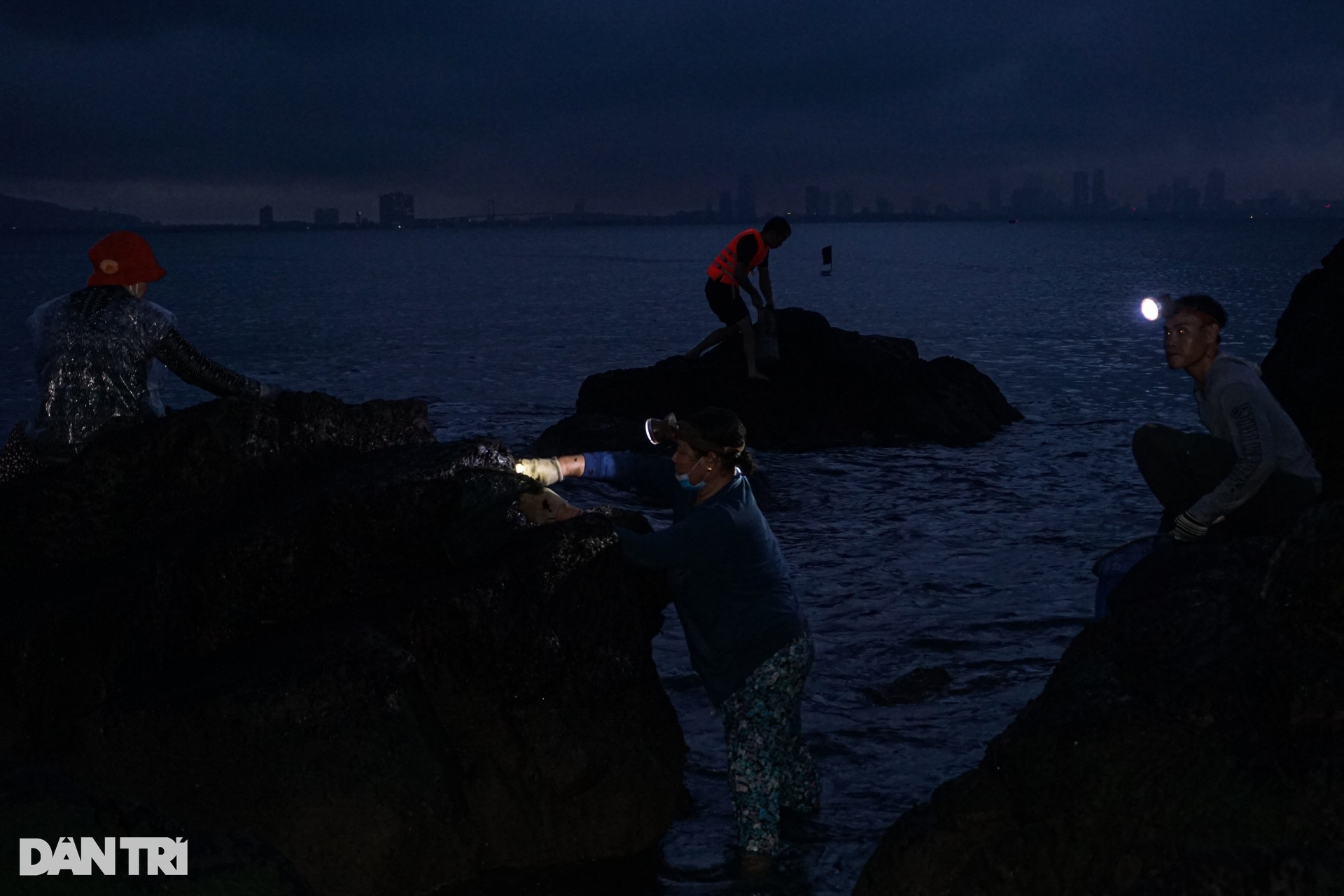
Around 4 am, Ms. Huynh Thi Tha (55 years old, residing in Lien Chieu district, Da Nang) called her “friend” to prepare tools, and headed to the cliff to start a day of picking seaweed with hope.
The one holding the racquet, the other shining the lamp, and then pulled each other across the path lying next to the cliff. In less than 20 minutes, they arrived at the mining site.
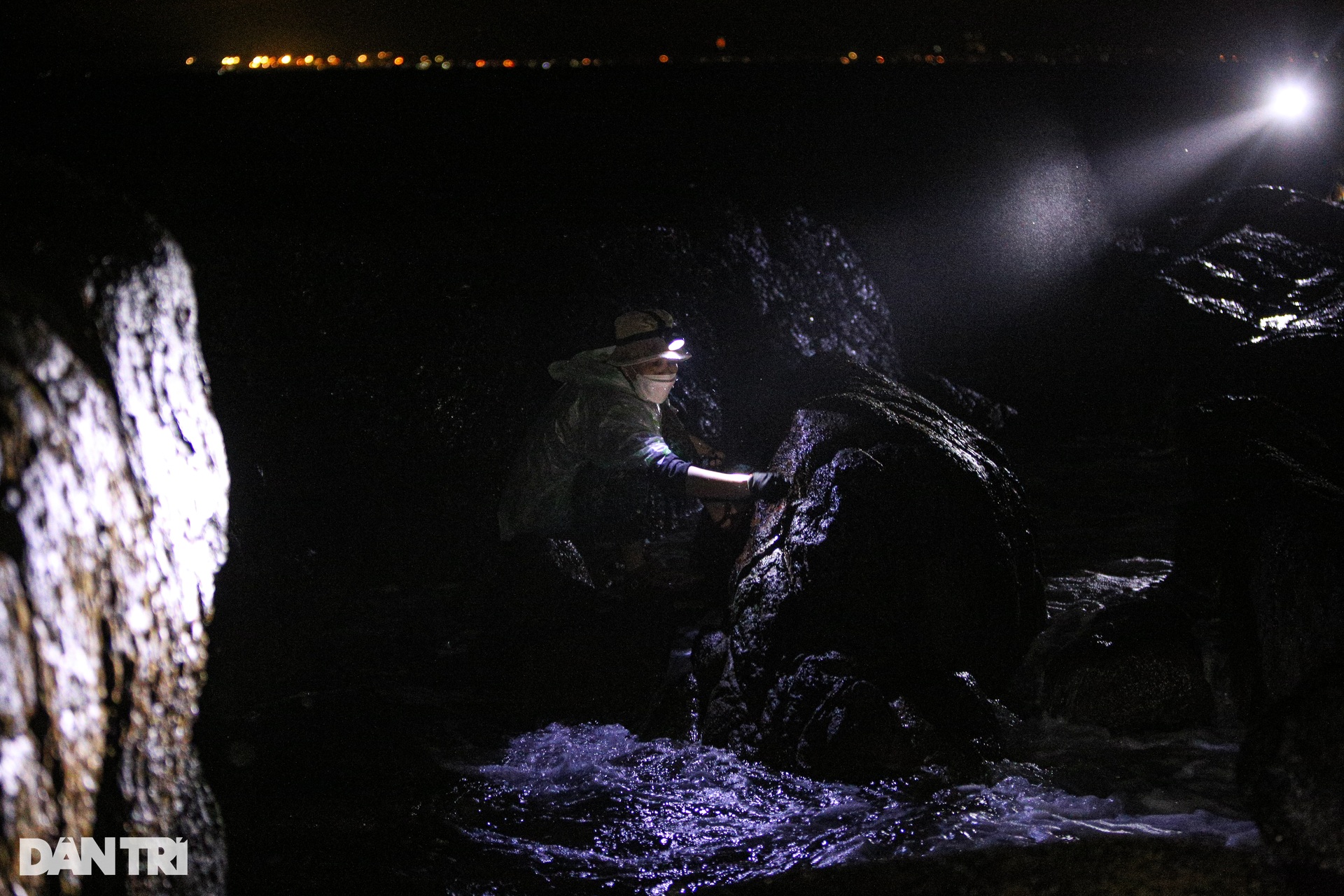
In the dark of the night, the face of the person could not be seen clearly, the flashlight lights crossed each other into a streak of light. They struggled to tie the bag to their backs and then stooped, groping each block of rocks to the sea.
The early winter weather caused the tide to recede early, exposing the rocks and that was also the time when “gold mines” appeared for the people of Nam O to exploit.
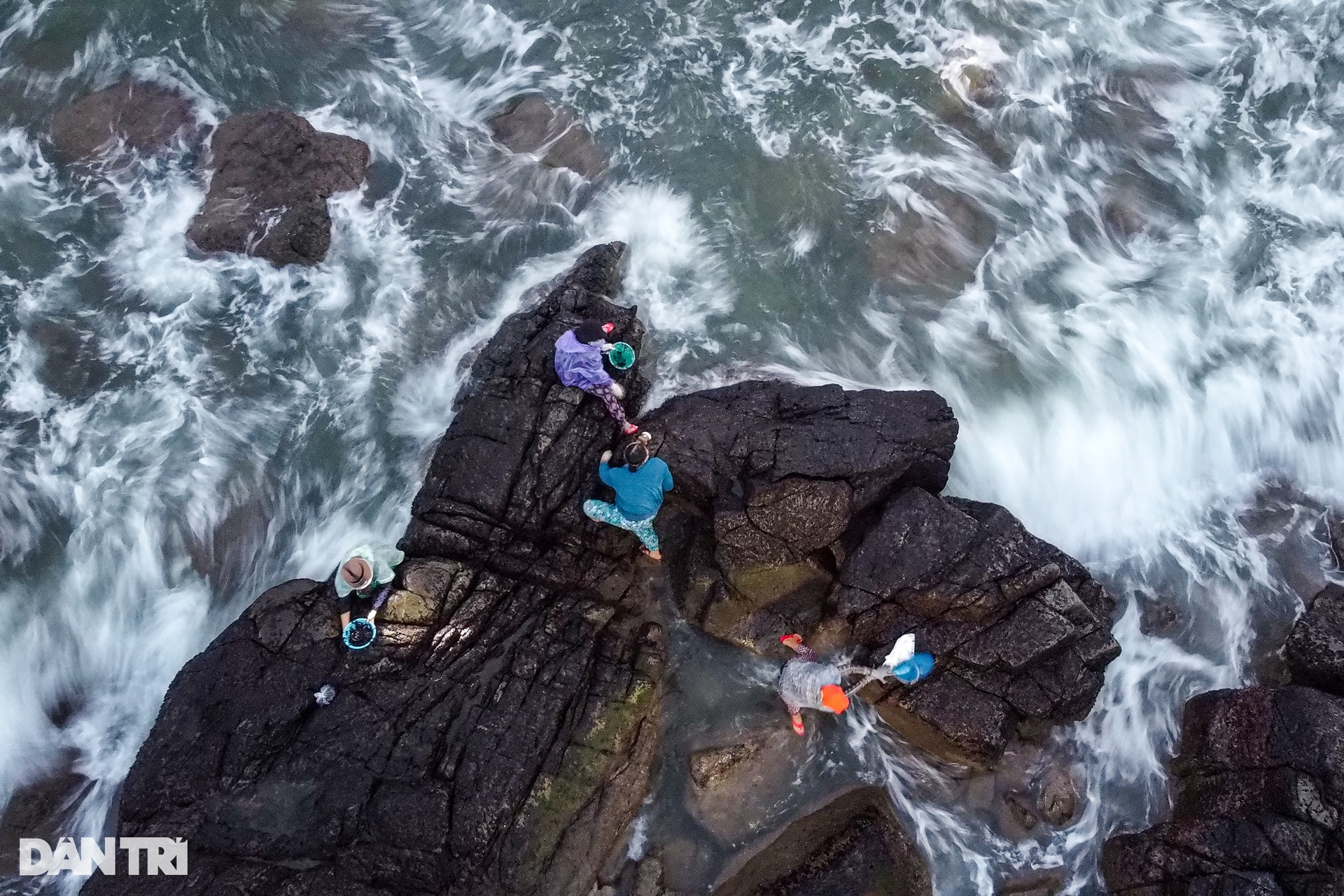
Around 6 am, the sea water began to recede, revealing the precarious rocks and sharp iron. Suddenly from the shore, laughter said: “Can you get a lot of jam today, but go too early, dear friends!”.
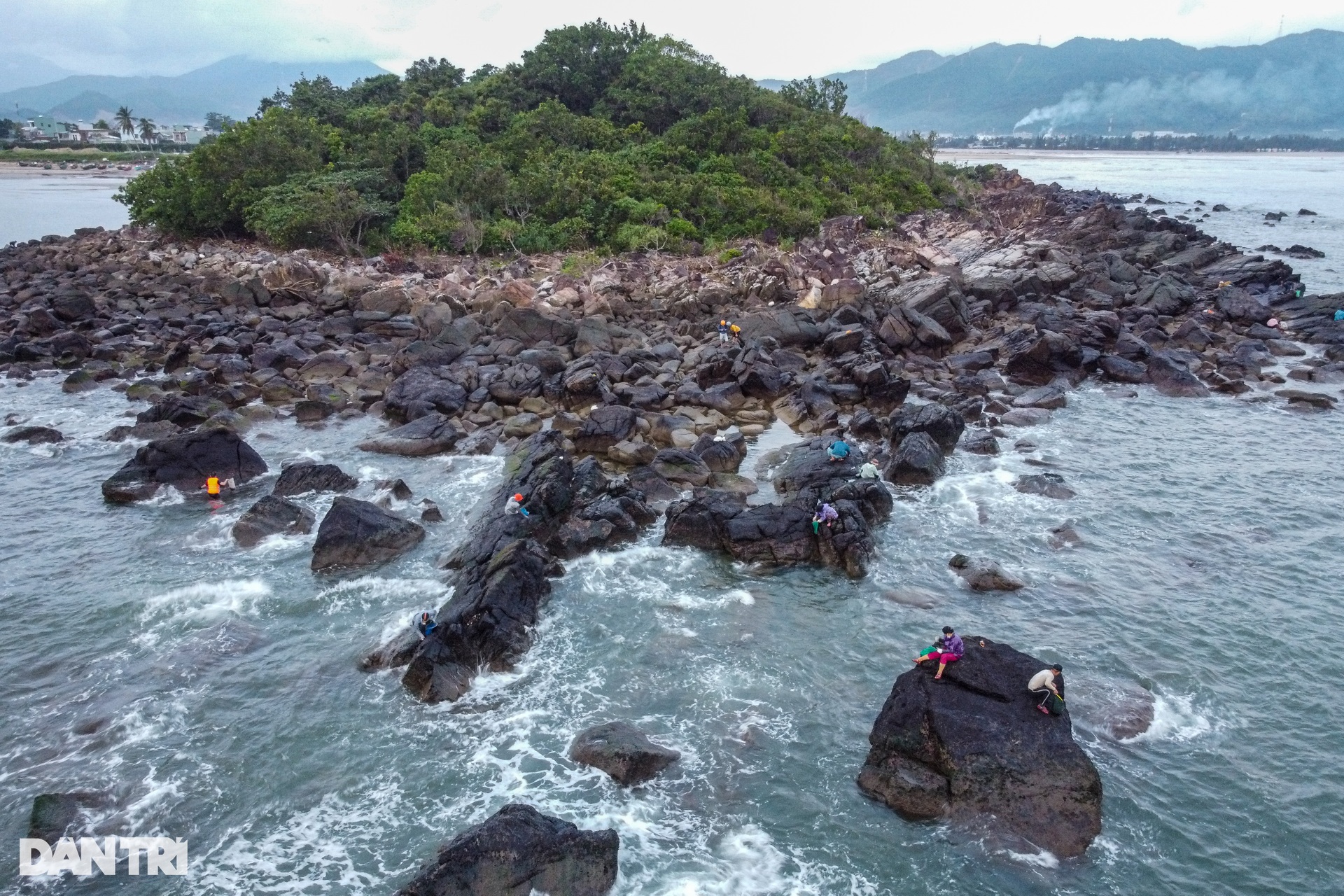
From the old forest, dozens of people from Nam O village came out to the river to find jam. I don’t know since when, picking that black “sea fortune” has become the livelihood of the people here.
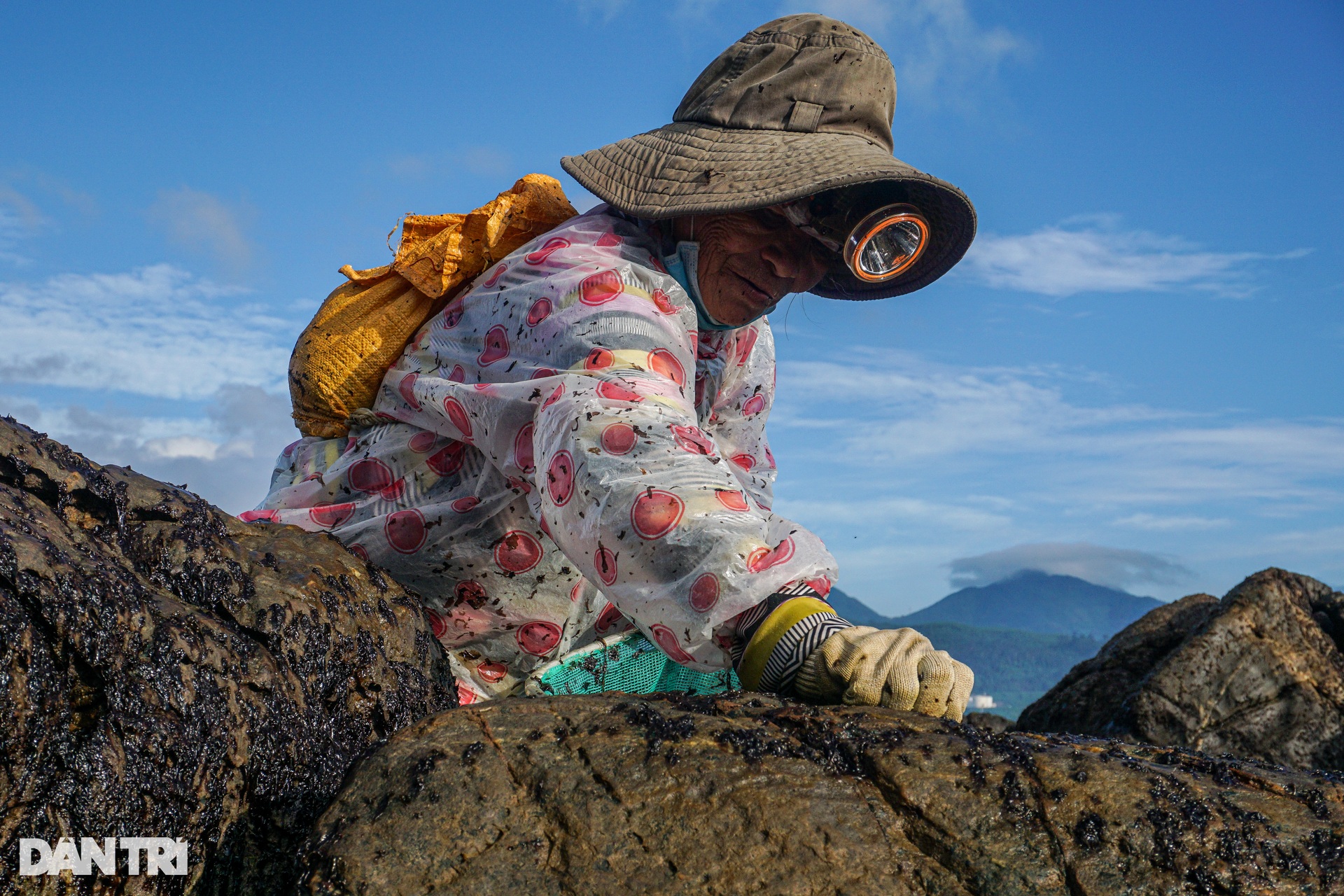
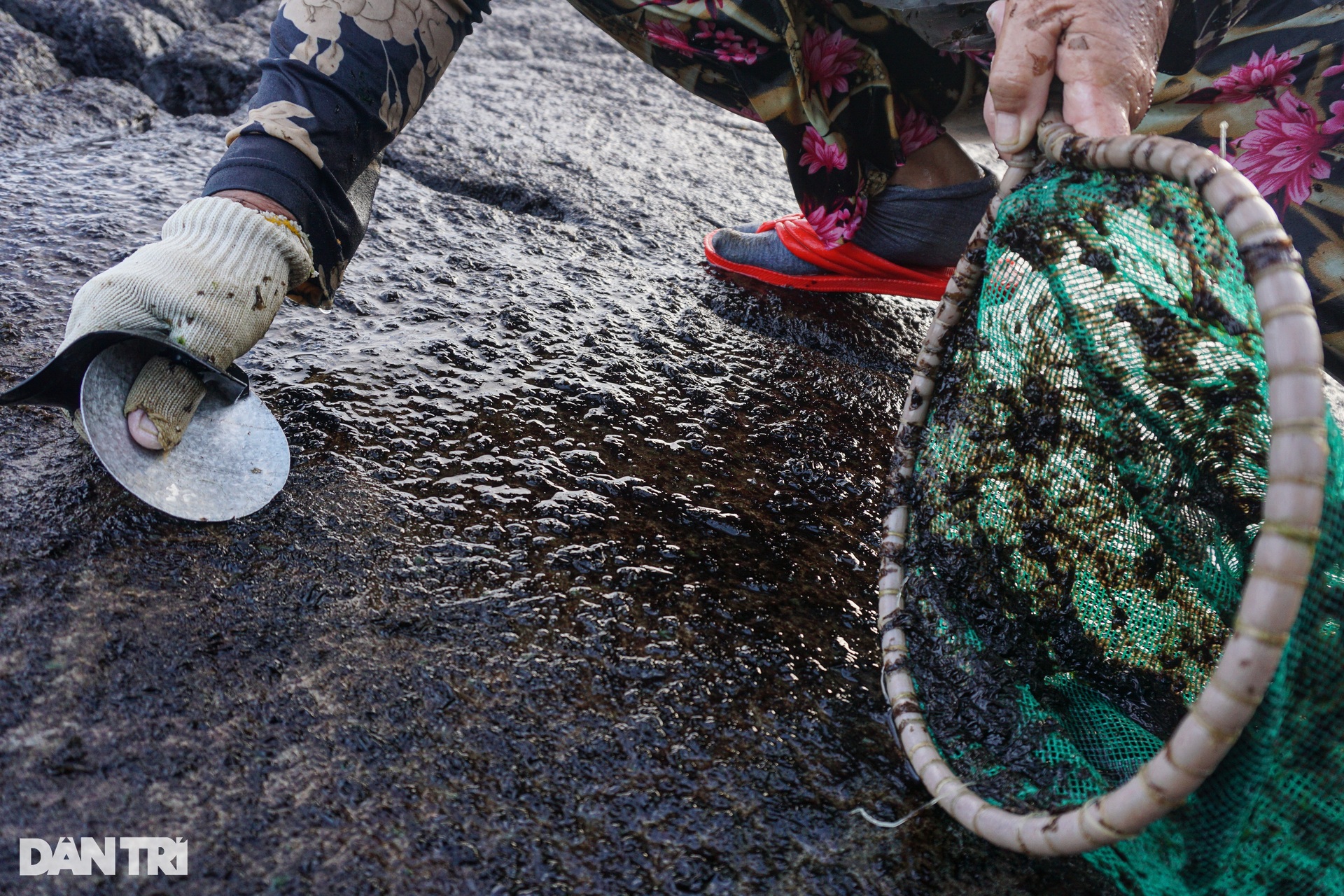
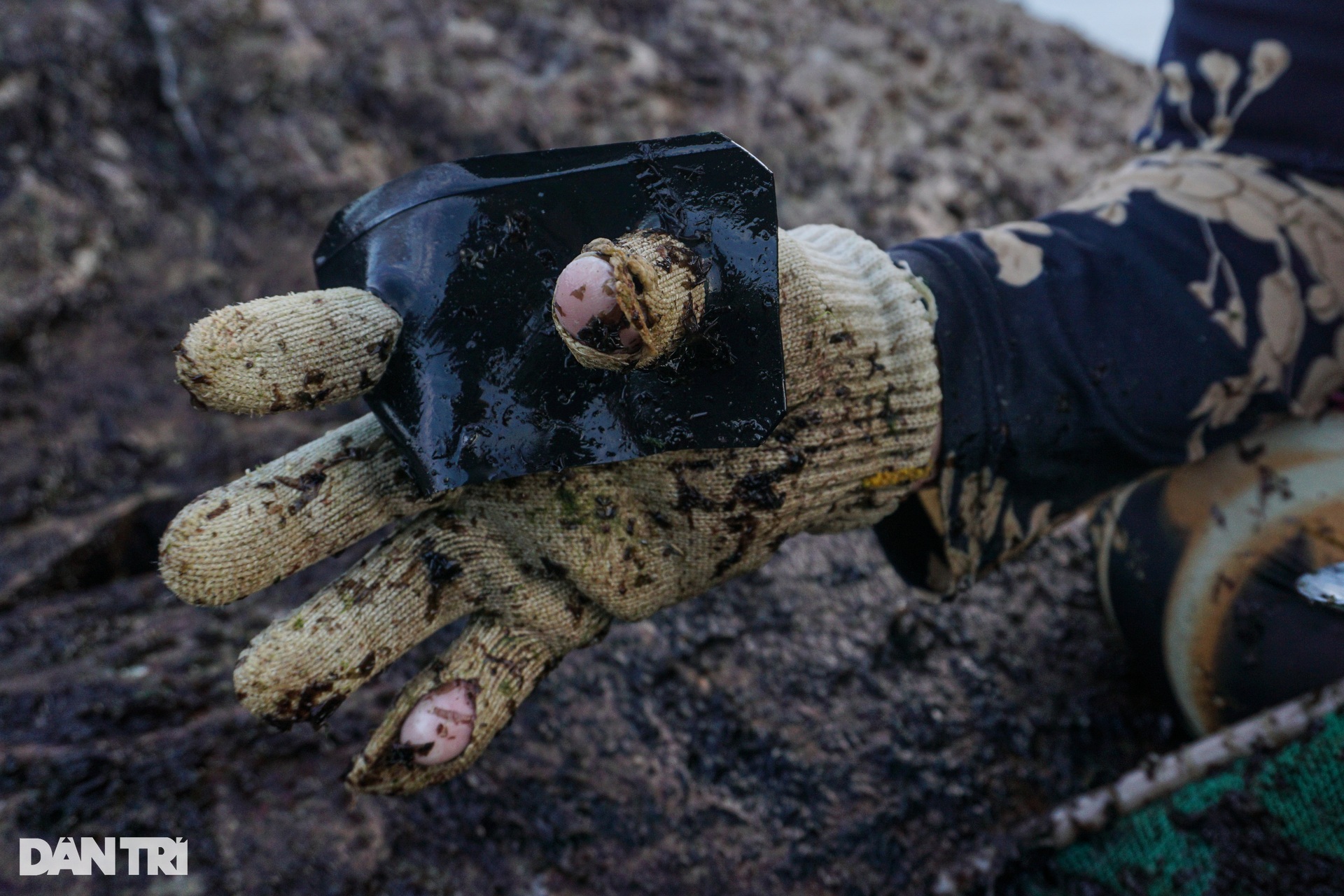
The harvesting equipment is very simple, consisting of a racket, a carrying bag, a flashlight and an aluminum pad. In particular, the worker’s gloves are improved with a piece of rubber between the thumb and forefinger to prevent the aluminum piece from cutting into the skin.

When climbing the cliffs to pick jam, workers have to wear tight clothes and cover their heads to fight the cold and morning dew of the sea.
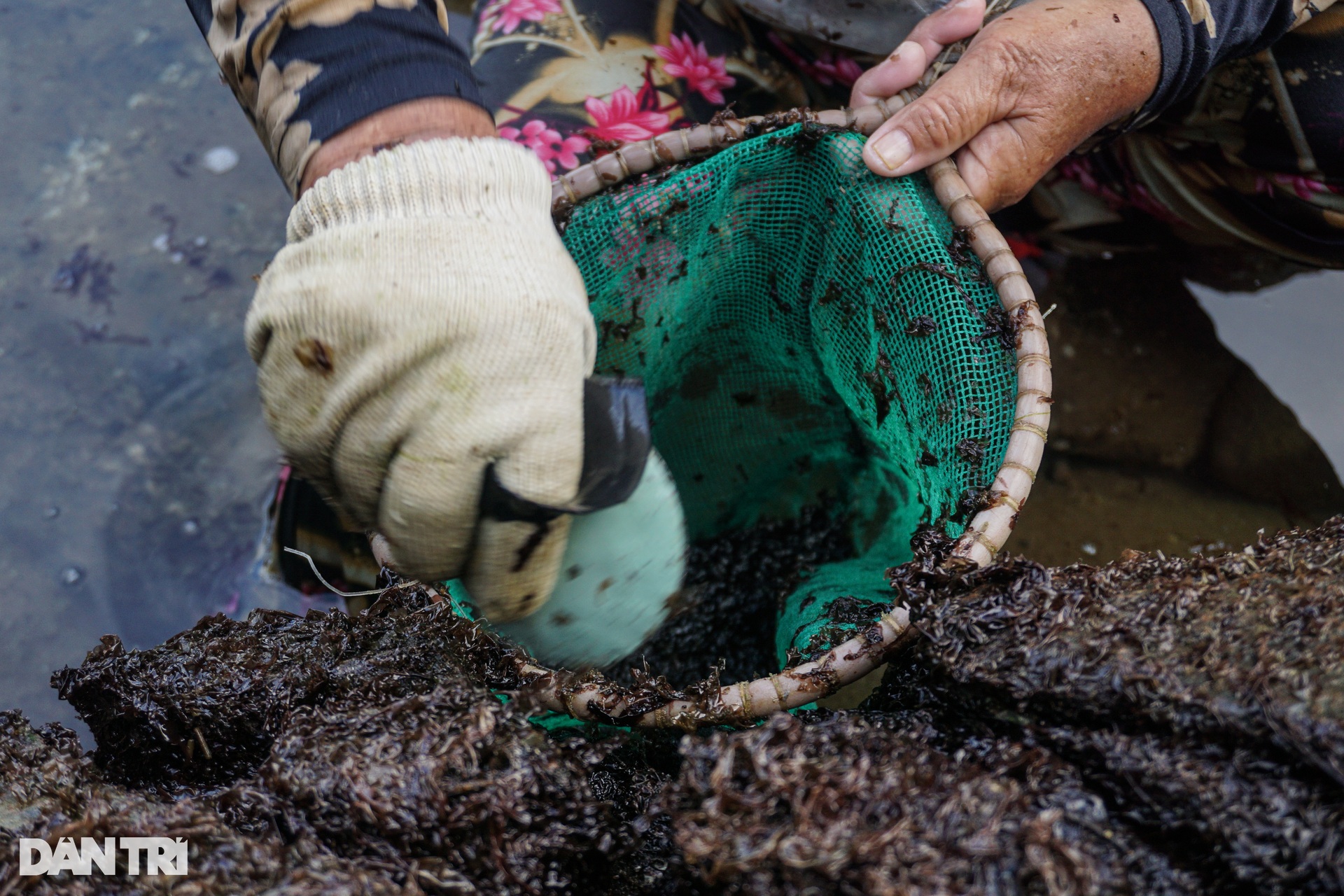
“Pink, rattle, pop”, the sound resounded in unison over the sound of the waves. It is the sound of aluminum sliding on the rocks under the hands of people picking seaweed and sea jam.
When the seaweed dries and wrinkled like pieces of plastic clinging to the rocks, people have to use homemade aluminum pieces shaped like a plate to scrape the stone surface.
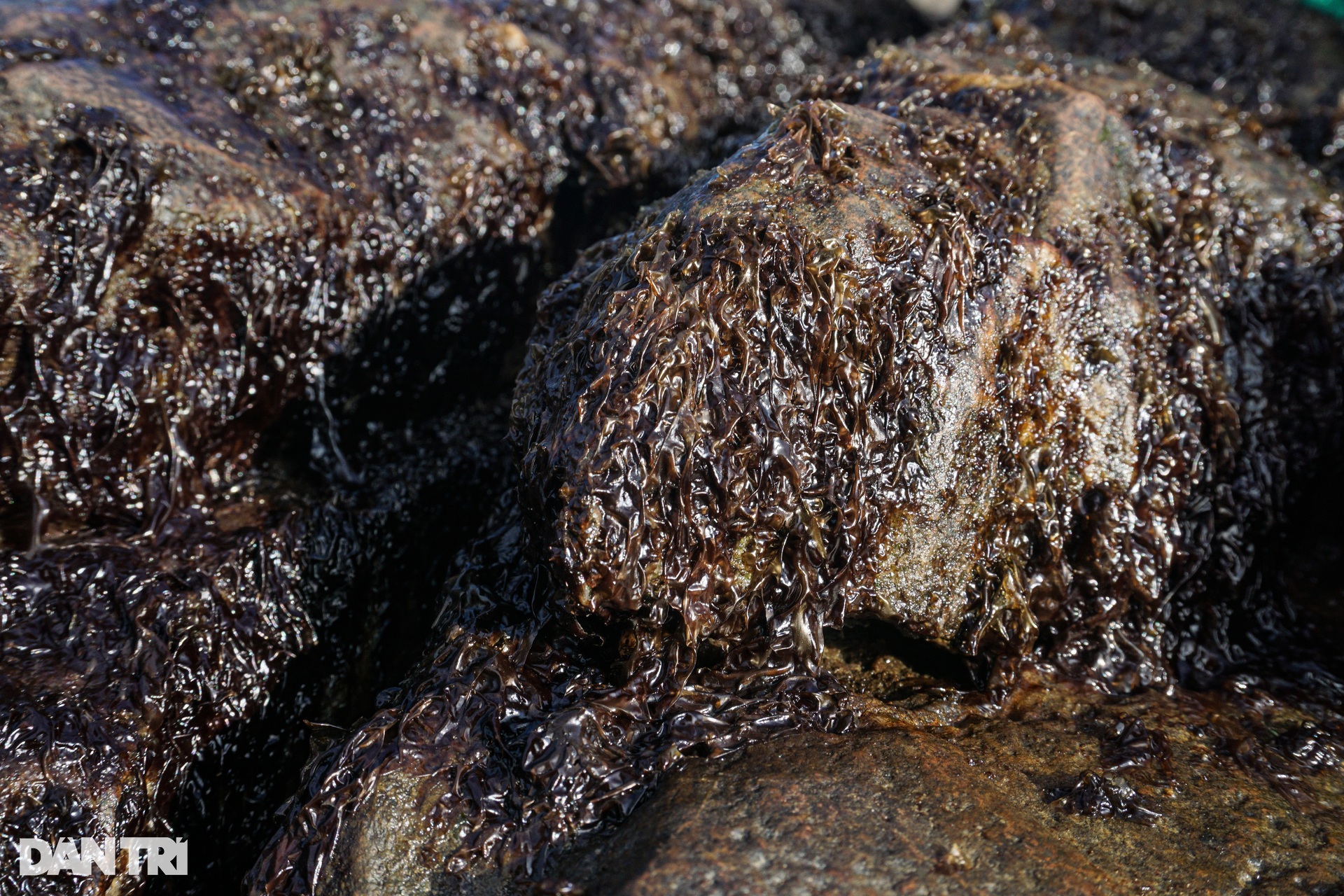
The jam season starts from October to the end of December of the solar calendar. According to people, many seas across the country also have this dish. However, in the Nam O region (Da Nang) jam is considered the best because it was used as a gift to the king.
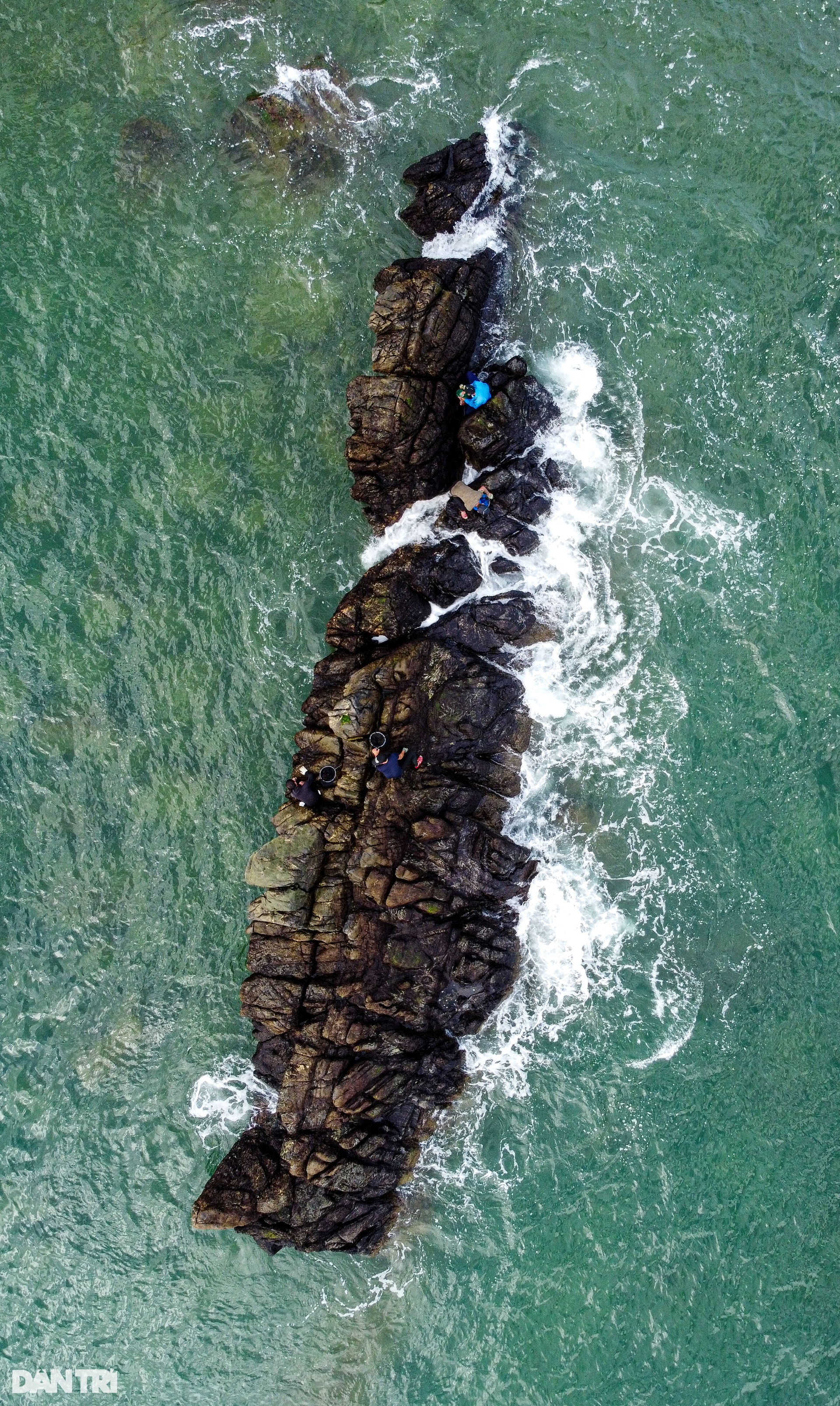
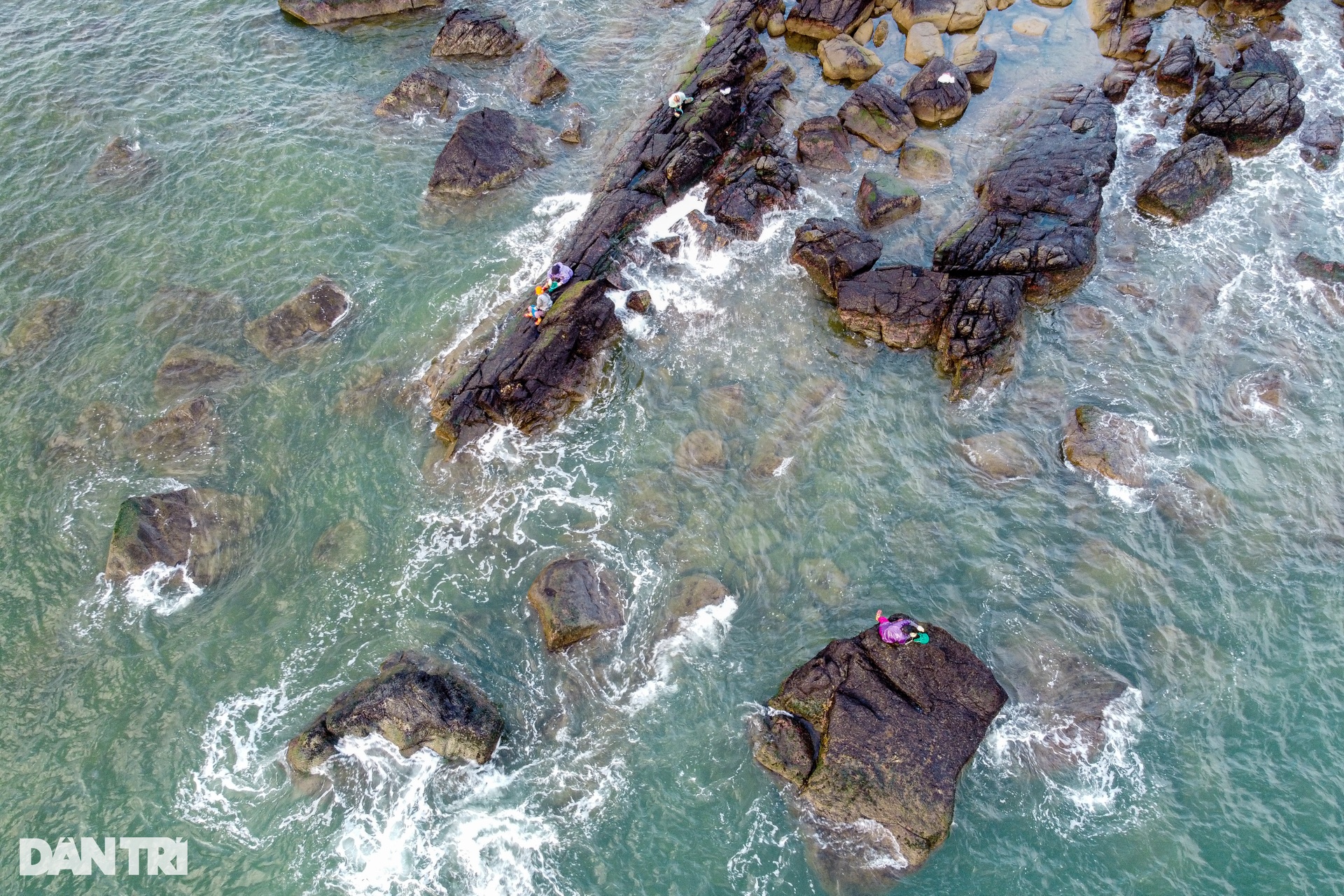
Around 7 a.m., many people swing over large rocks to make a living. People who go to pick seaweed and sea jam said that because the tide rises and falls very quickly, they should take advantage of the time to harvest from dawn to midday.
After this time, most of the people are left with only the elderly and children who cling to scrape the remaining dried seaweed lying near the edge of the shore.
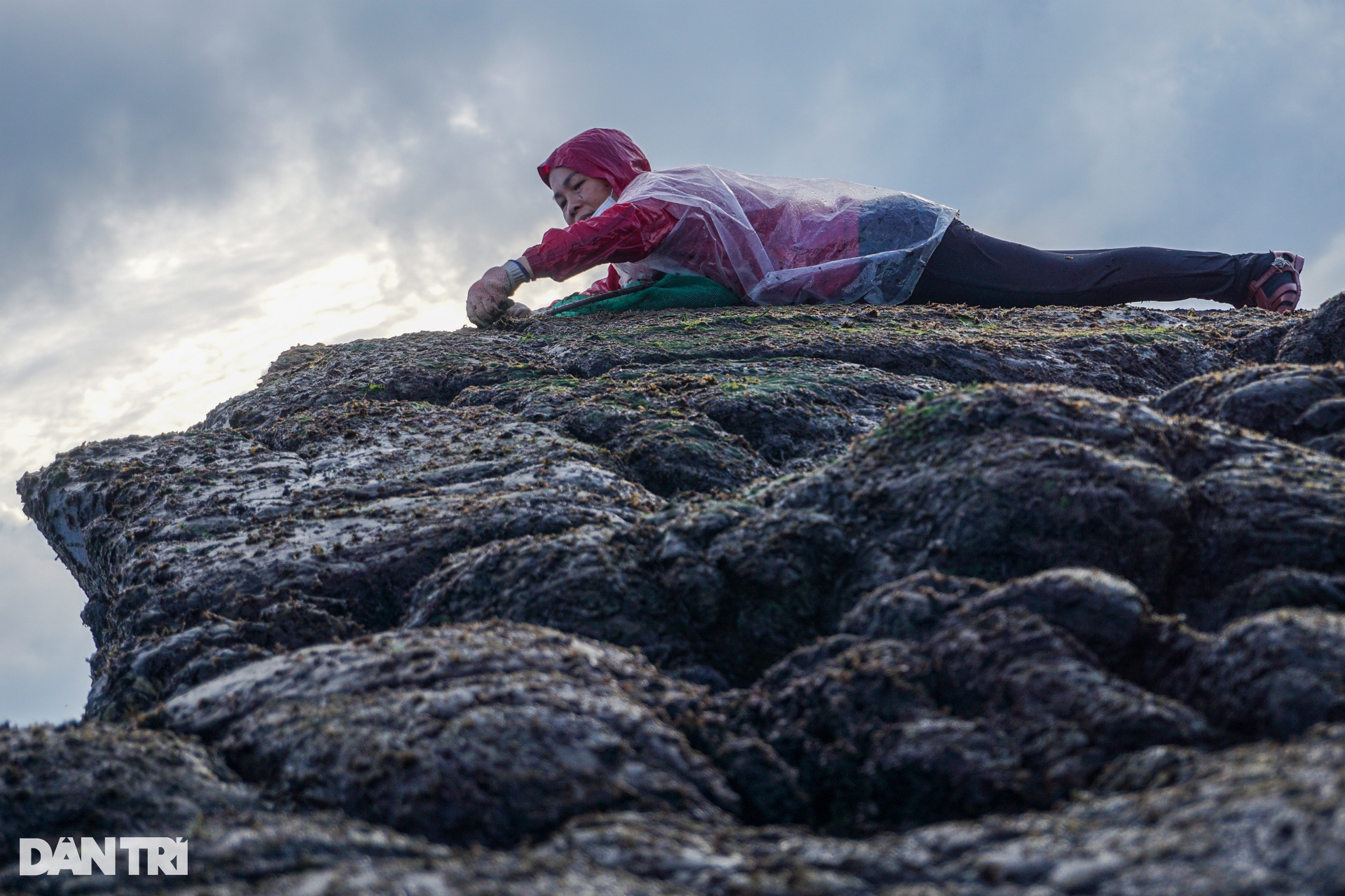
Sea jam often grows on craggy cliffs. These rocks are very slippery, jagged, and rugged, so the pickers have to use all means such as lying, crawling, and crawling to be able to cling to the rocks.
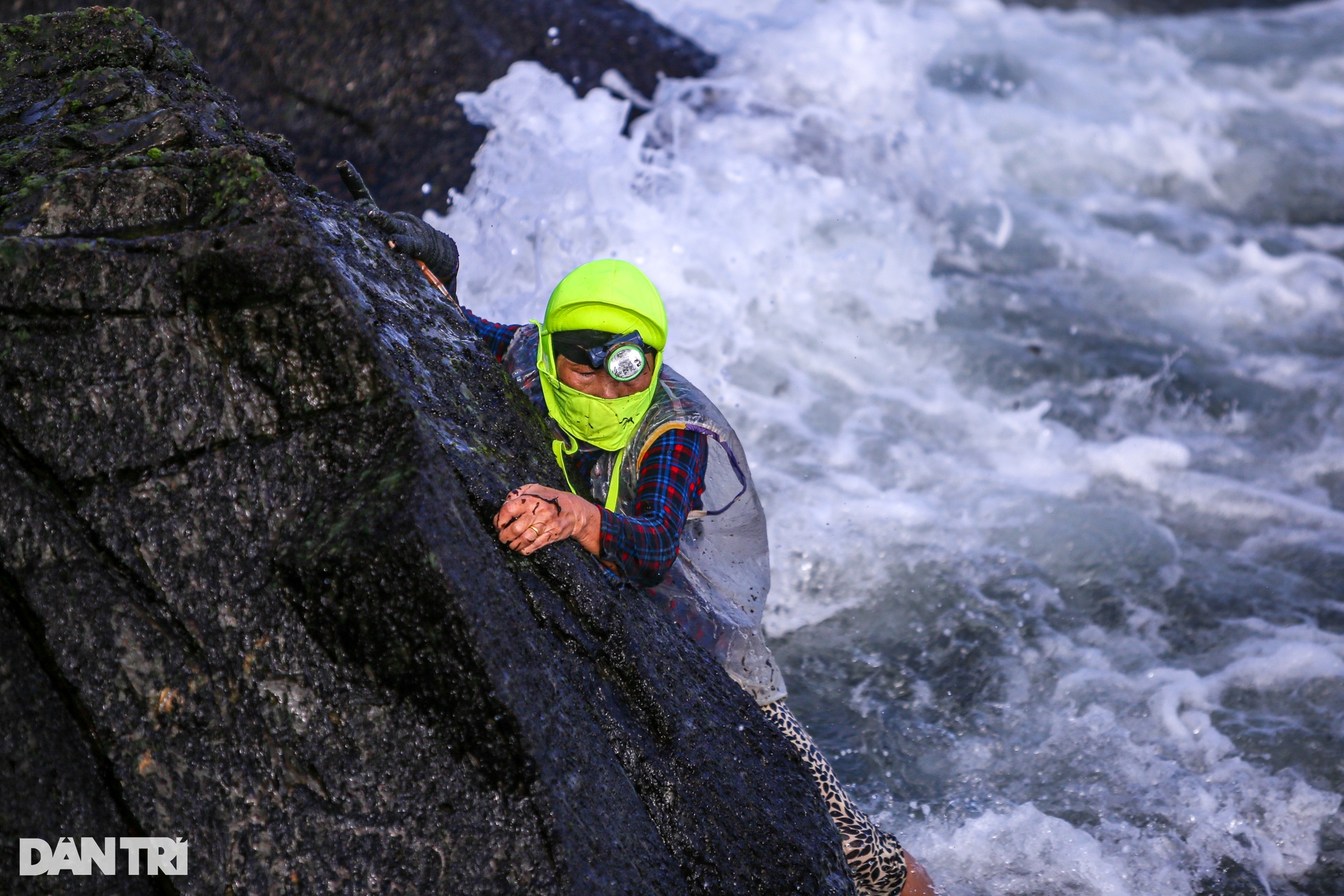
In the quiet space, suddenly a rumbling sound was heard. The big wave suddenly crashed into the cliff, Mrs. Cao Thi Xanh (52 years old) hurriedly clung to the cliff, using all her strength to crawl up to get out of the fierce wave that was trying to drown herself in the sea.
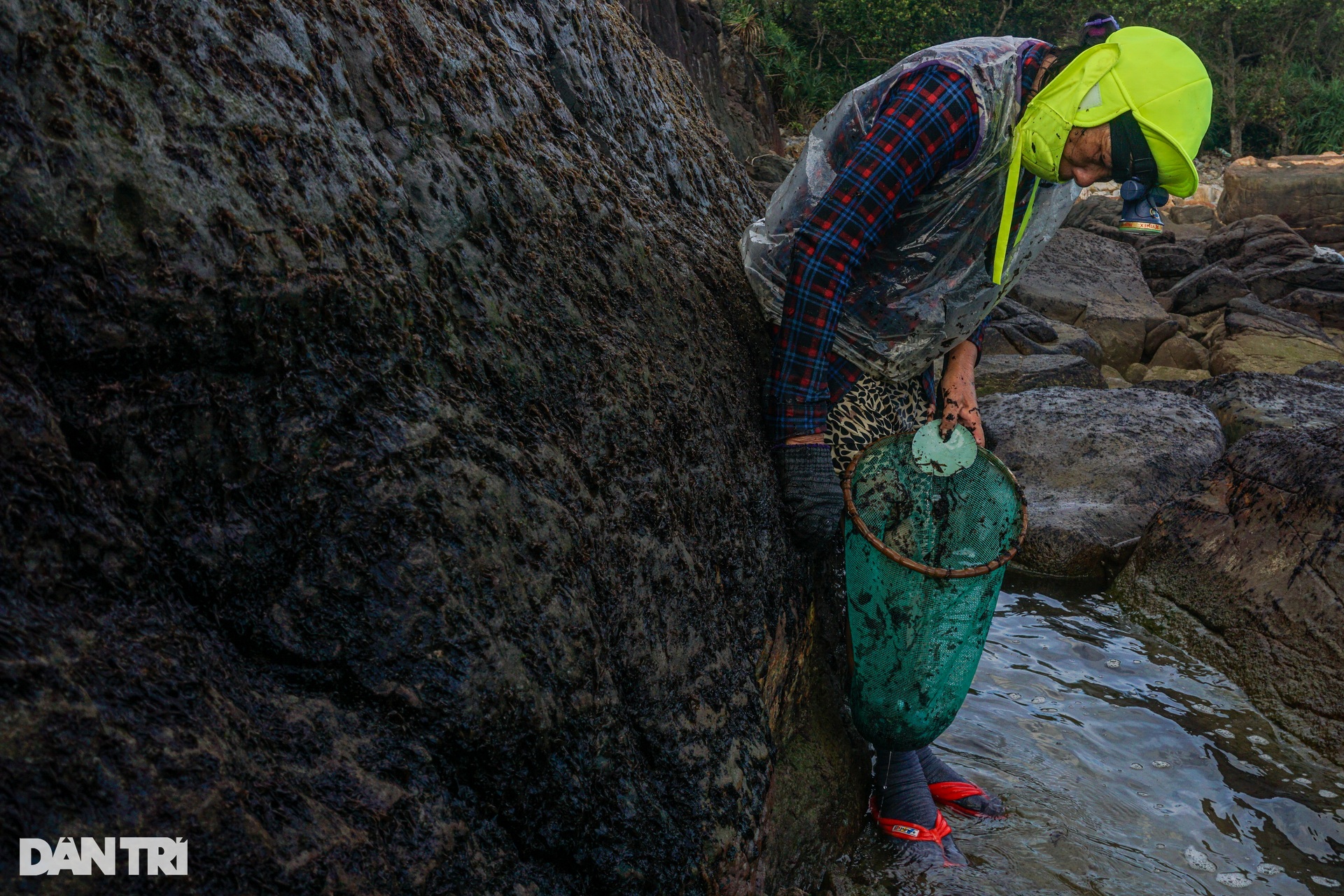
The waves broke, her clothes drenched, her face pale as she couldn’t believe she had narrowly escaped death. But then not to panic, she continued to stand on the edge of the rock to make a living.
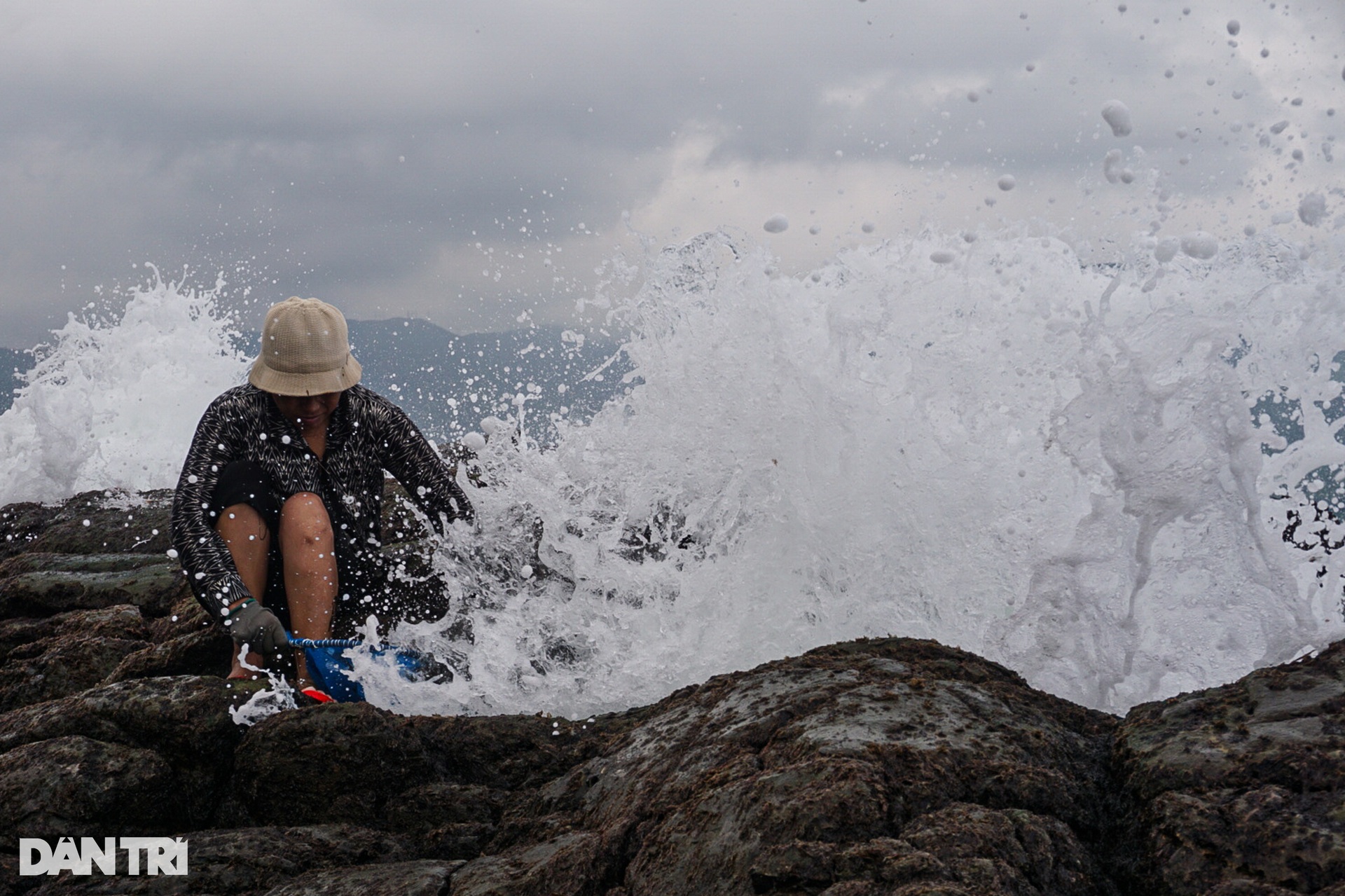
When picking this “sea fortune”, the worker must stand firm, his feet clinging to the cliffs, his hands are jammed with jam, but his eyes must look out to the sea to watch the waves. If you make a mistake, encounter a sudden big wave, you will slip and fall into the sea immediately.
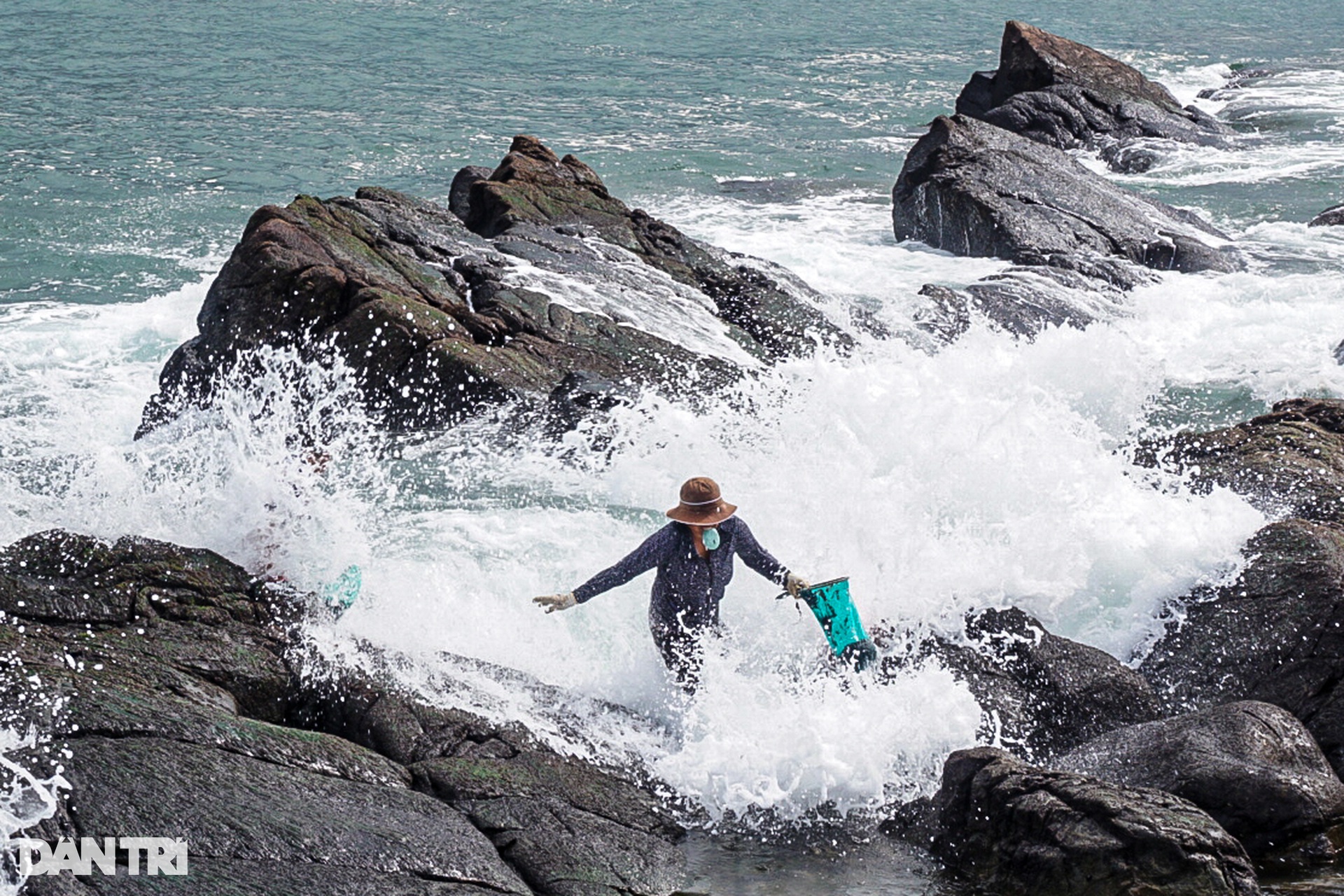
“Run the waves, run the waves, Sister Thu!”, a woman shouted when she saw her sister still standing under the rapids, offshore the big wave was coming. Fortunately, hearing the scream, the woman was able to run away from the raging waves.
“This job is very harsh, if you are fast, you will live, if you are slow, you will die. If you are not careful, you will be dragged into the sea by waves and lose your life like a game,” said Ms. Bui Thi Tam.
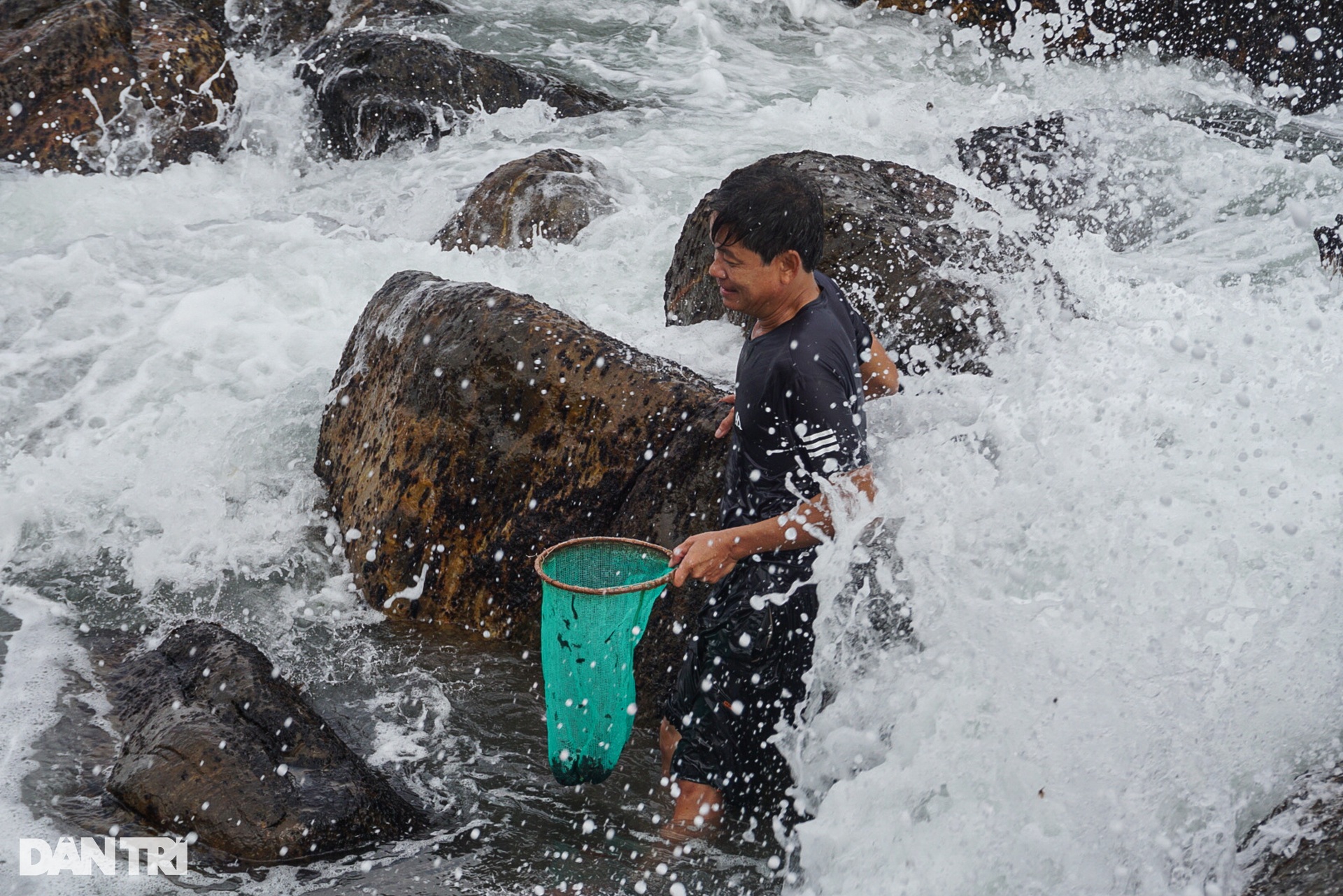
For more than 10 years in the profession that Mr. Nguyen Van Ha (45 years old) calls “selling blood bowls, eating rice bowls”, he can’t remember how many times he has been beaten down by waves, scratched by oysters.
On such occasions, he considers himself lucky that he did not have to perish on the precarious cliff.
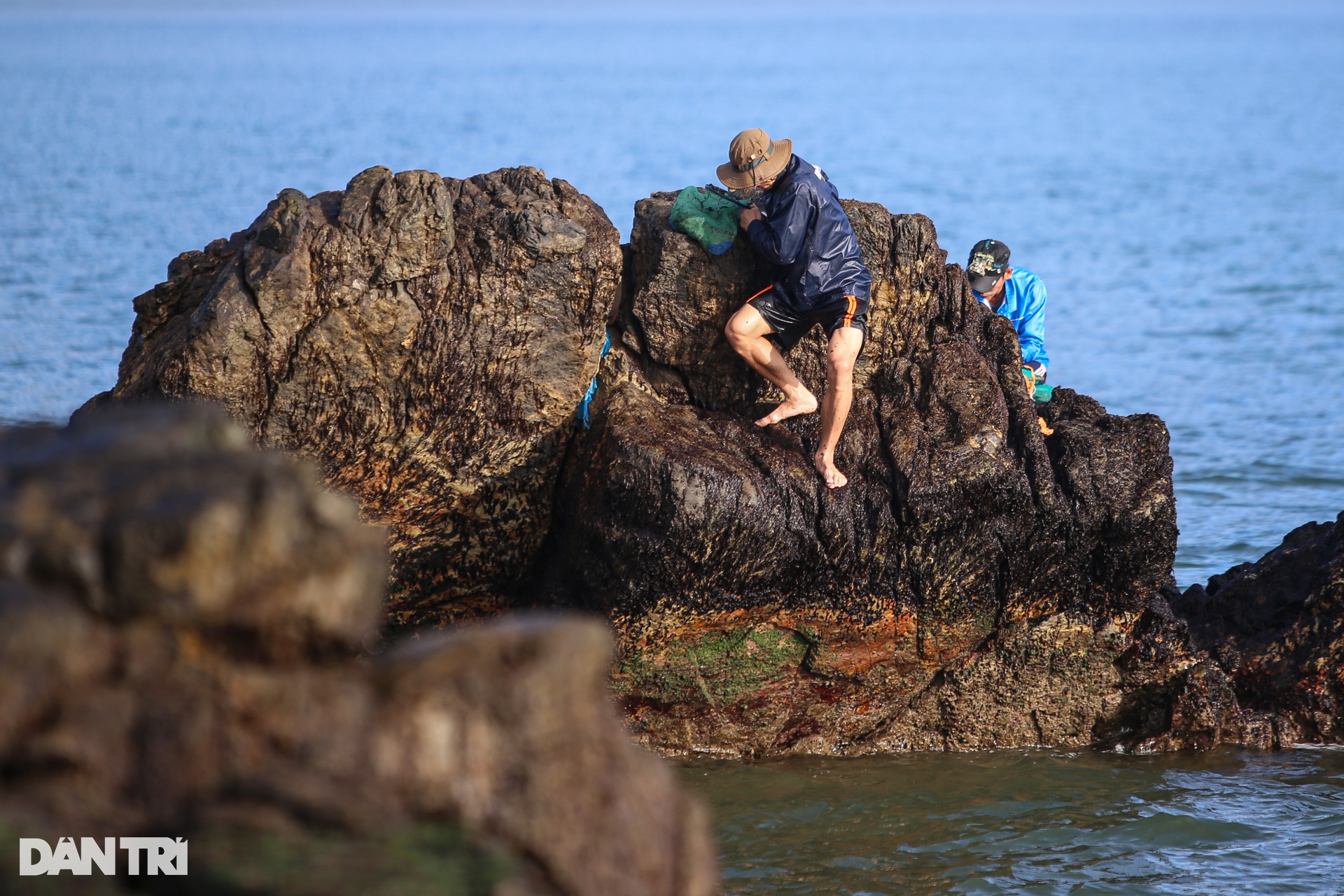
Looking into the distance, where there are young men standing precariously and about to fall into the sea. Mr. Le Van Sinh (40 years old) confided: “People in the profession like me, life and death are only one step away from each other”.
“Because of the food and clothes, I know it’s dangerous, but I still have to do it. Many people have broken their legs and arms or have suffered injuries because they slipped and fell, and the waves hit the rocks,” said Sinh, sighing.
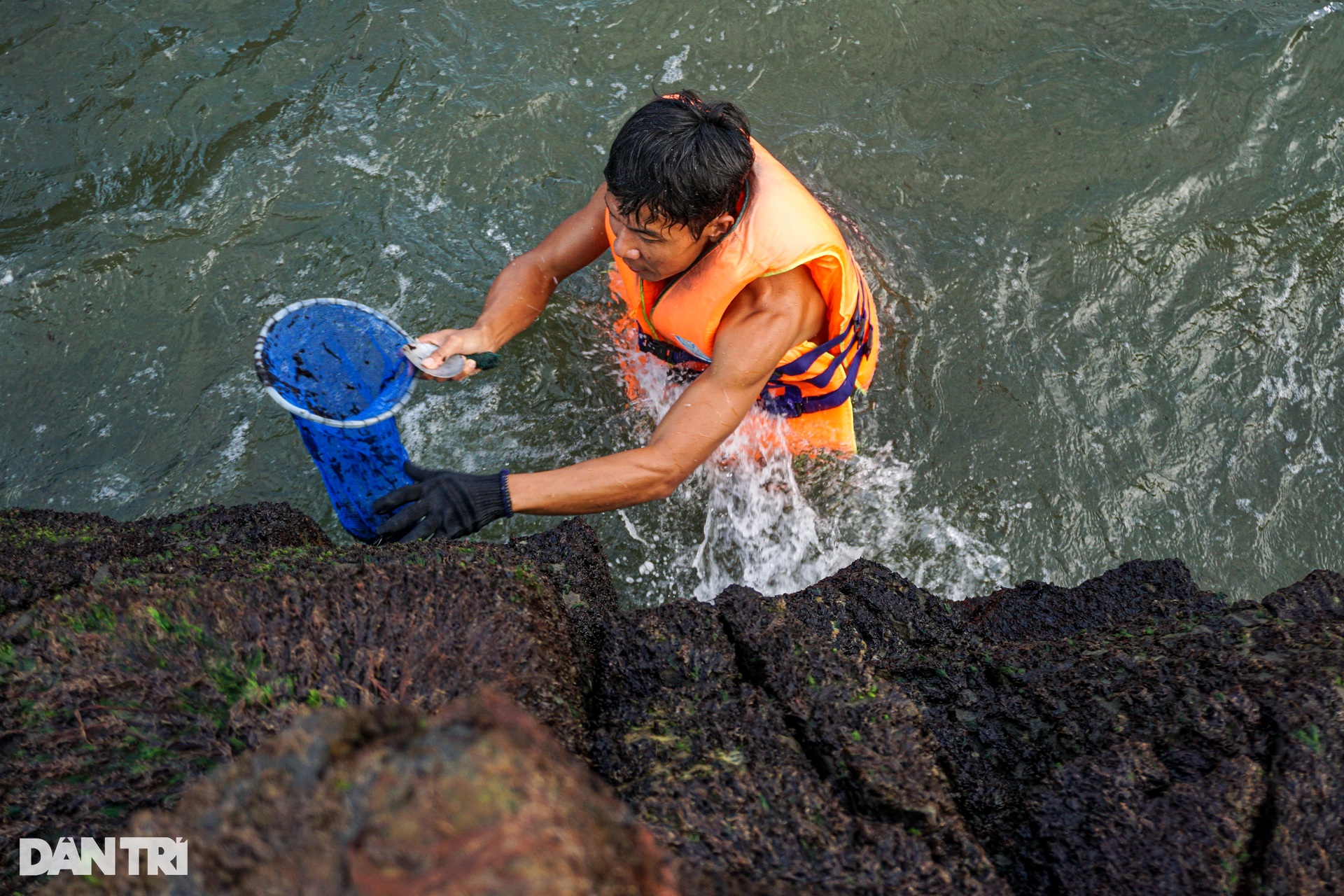
As soon as he finished speaking, Sinh was swept over by the waves and fell into the water. “Sinh, where are you?”, the woman next to him panicked. “I’m here, I’m here!”, Mr. Sinh replied as soon as he came to the surface to reassure the caller.
“This job is not known to live or die, you have to watch and remind each other when you go to work. Don’t be so greedy that you forget your life”, Mr. Sinh laughed, then said as if to explain.
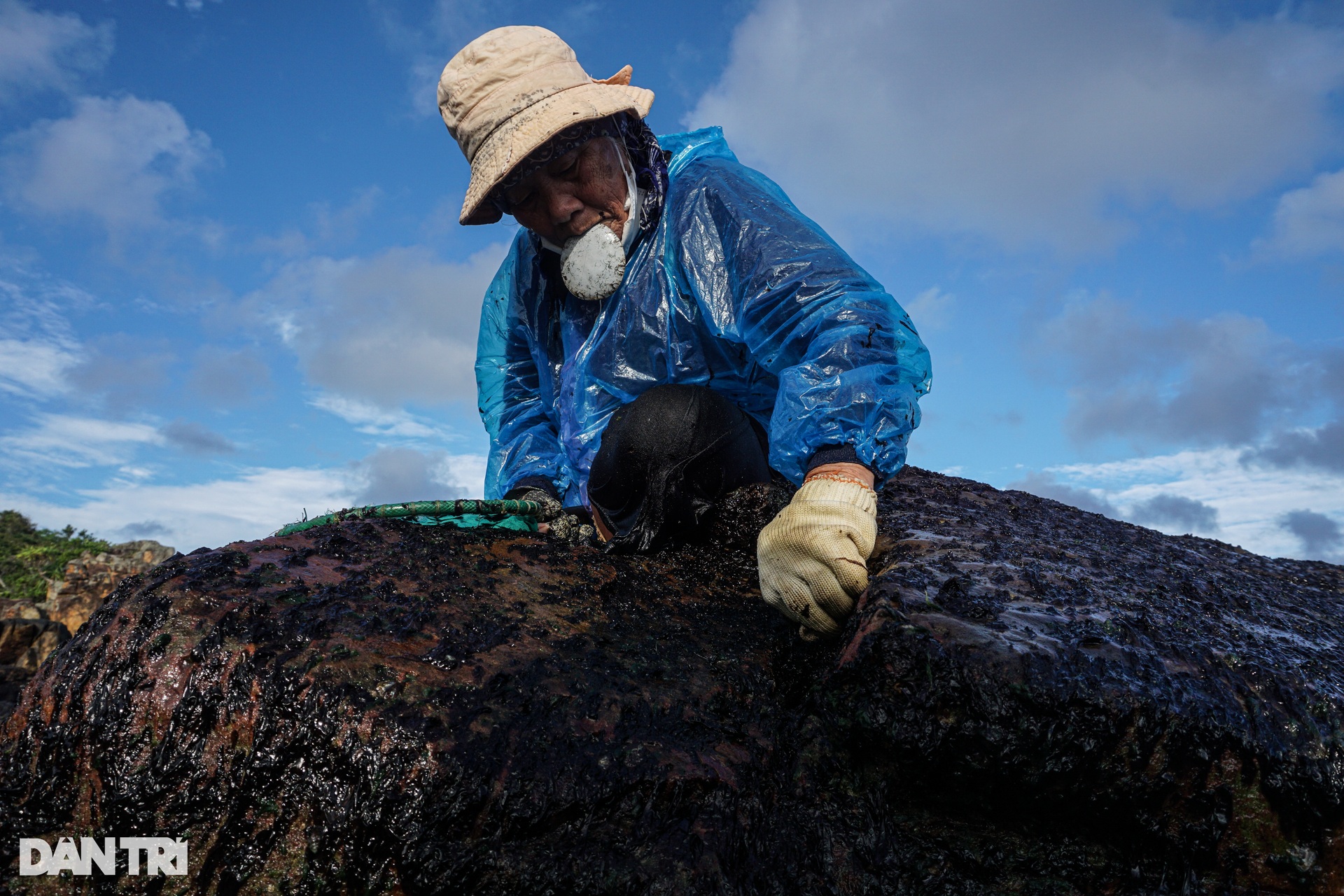
As a lucky person to escape death in a slip and fall into the sea, Ms. Le Thi Huong (80 years old, living in Hoa Hiep Nam ward) still shudders whenever she remembers.
Ms. Huong said, when she was young, she often went with the people in the village to go to the rocky cliffs in Cu Lao Cham (Hoi An City) to pick jam.
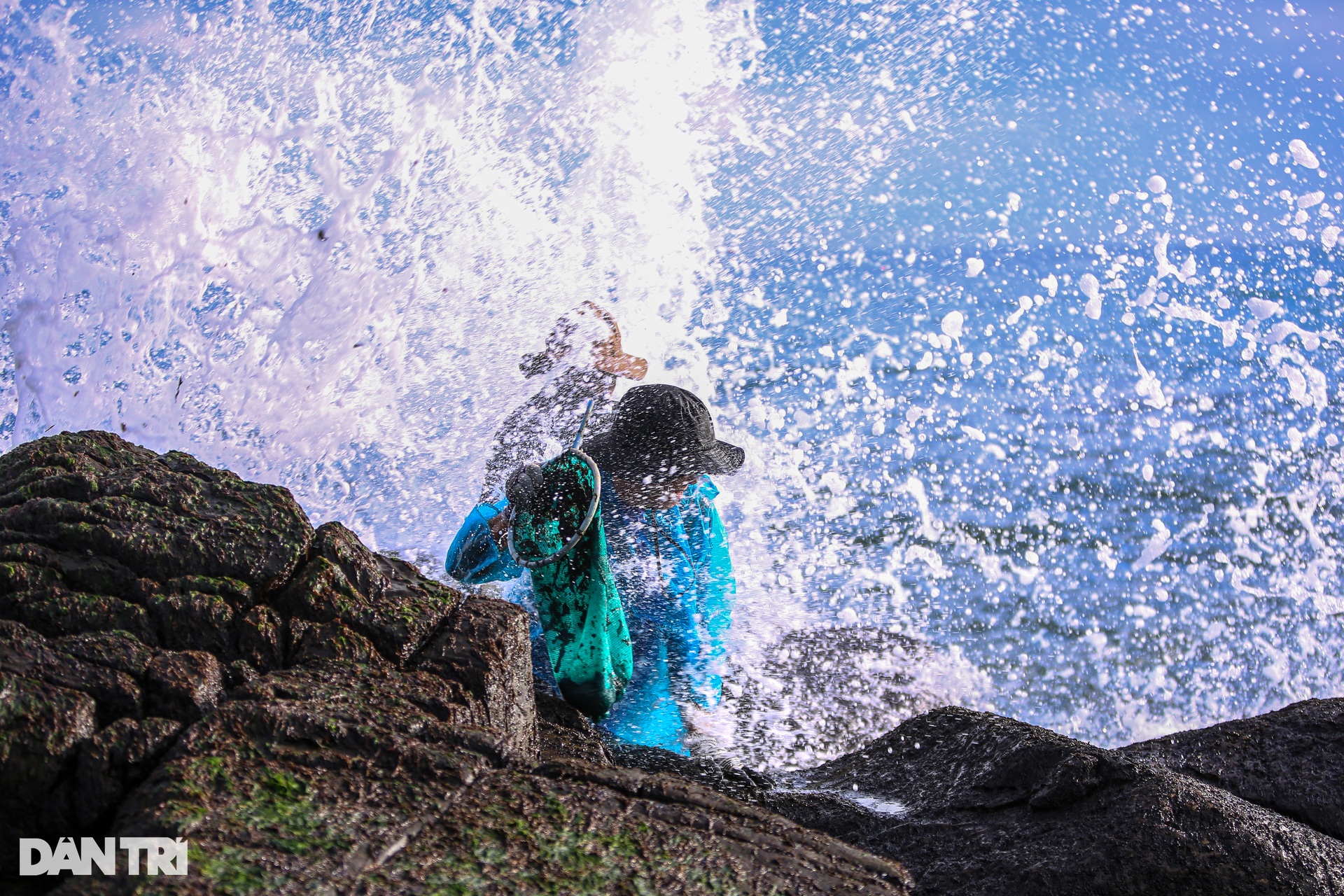
As usual, she struggled to find a safe place to pick. But that day, suddenly a big wave broke in, pulling her into the sea in the panic of everyone.
“When I fell into the sea, I tried to get up, but the waves kept engulfing me. At that time, I thought I was dead, but I did not give up, I kept trying to dive and cling to the rocks and people pulled up.” Huong recalls.
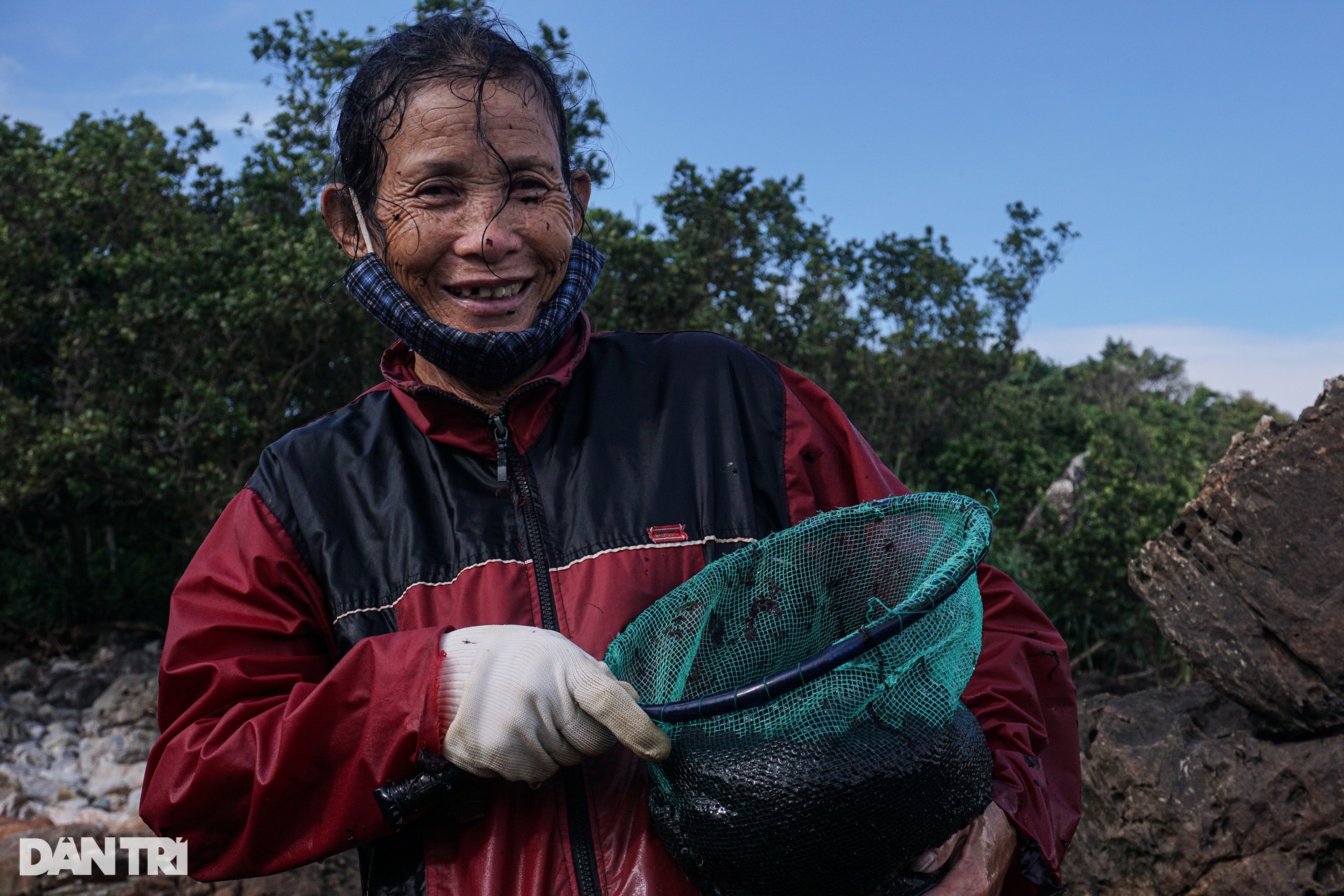
Indeed, in the jam hamlet, the people who hang themselves on the cliffs are very brave, although their work is too much, too hard, but the main joy and motivation is that the children can have food, warm clothes and not have to illiterate.
Sea jam is a gift from heaven for the children who are always loyal to the sea, helping them have a livelihood when they cannot reach the sea.
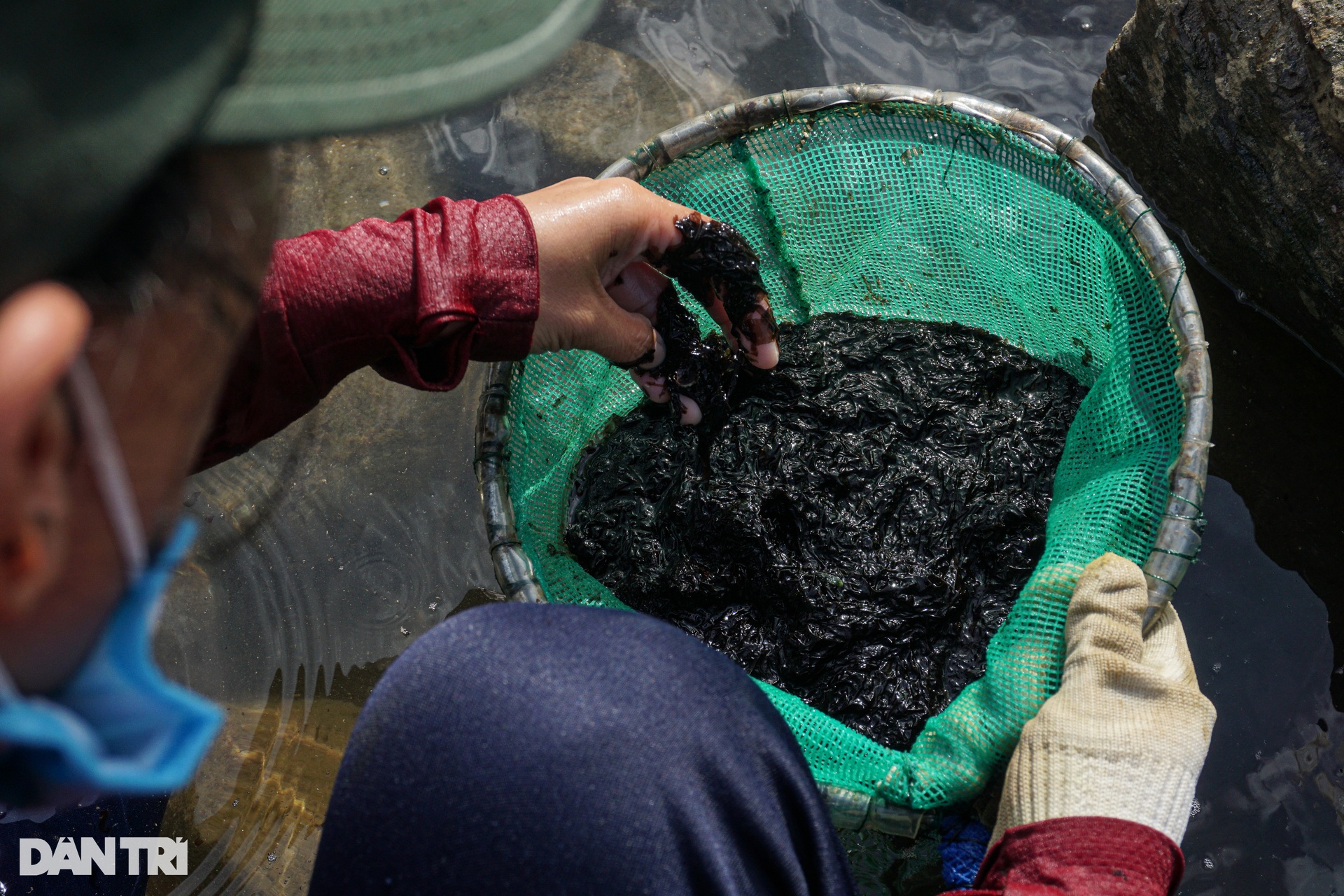
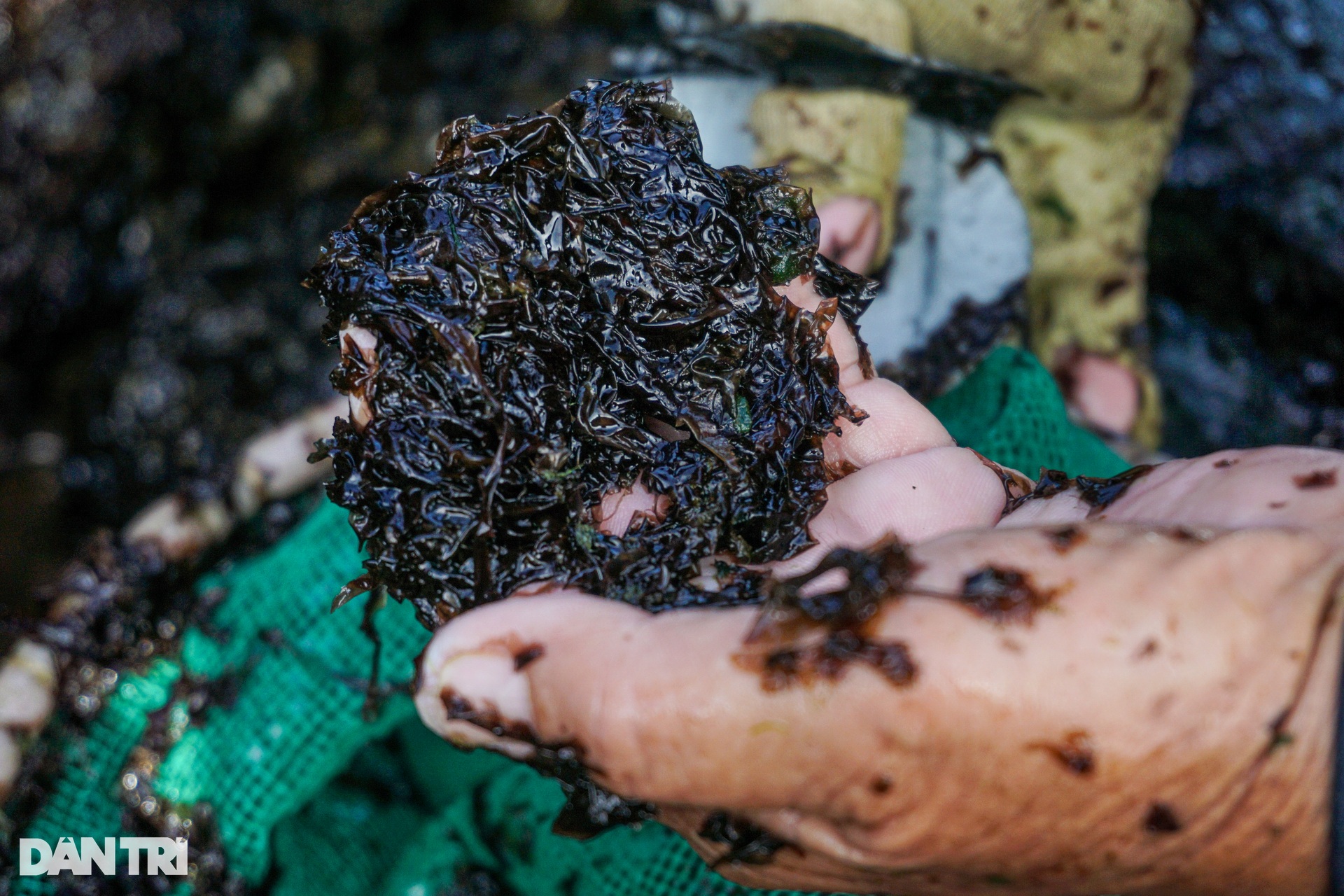
After being picked, seaweed will be washed once with seawater. Fresh seaweed costs 120,000-150,000 VND/kg. On average, a day, each person can earn 500,000 VND from picking seaweed jam.($1=25,000 VND)
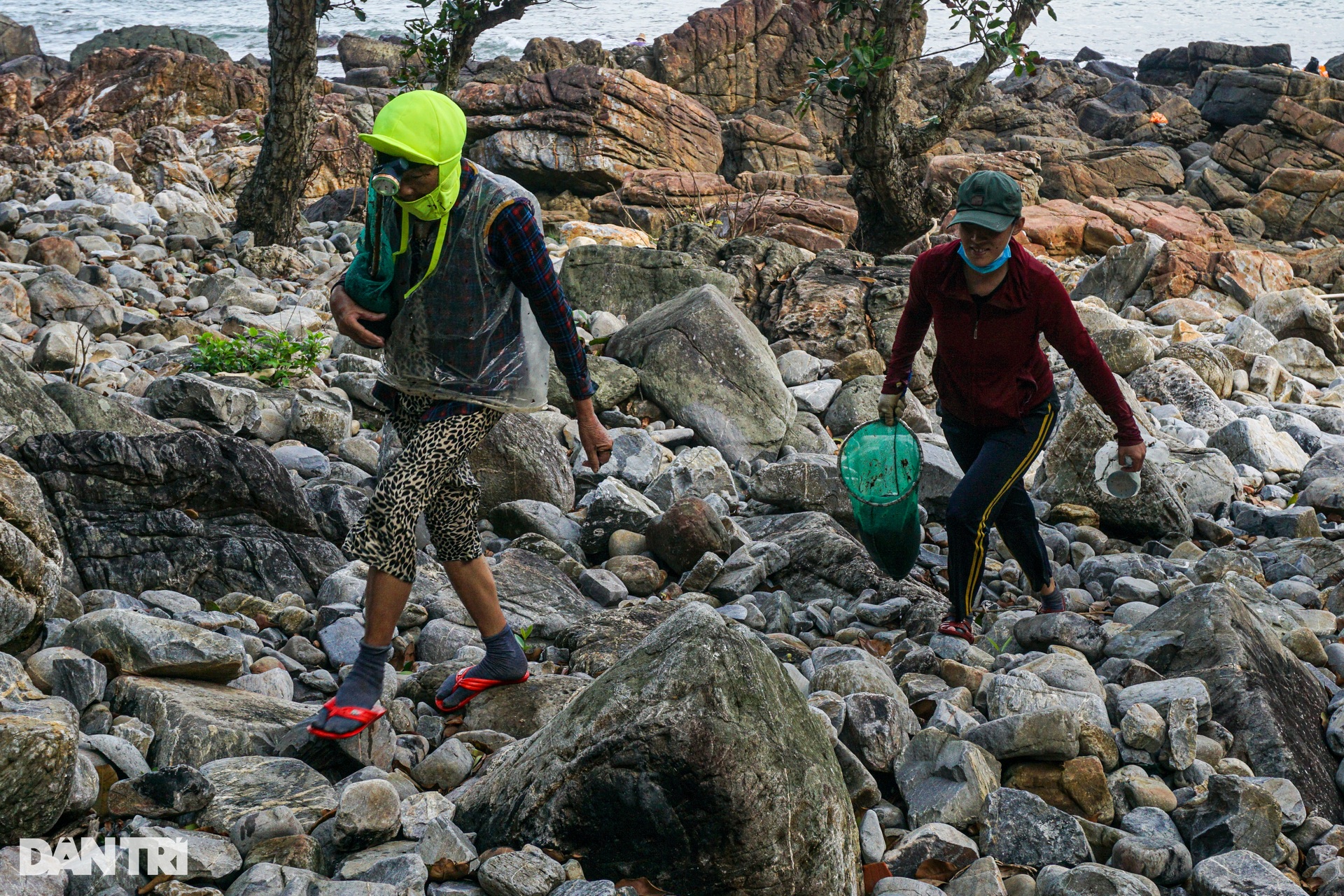
At exactly 10 o’clock in the afternoon, it was pouring rain, wind and waves were getting bigger and bigger, the group of jam pickers crossed the craggy cliff to go home. There is still time for the morning market to sell the fresh-picked seaweed.’
Behind them, the waves were still crashing against the rocks, sending white foam!
(According to Dan Tri)
The story of birth and death on Nam O cliffs: “To be slow is to die!”
vinlove.
Source: vinlove









